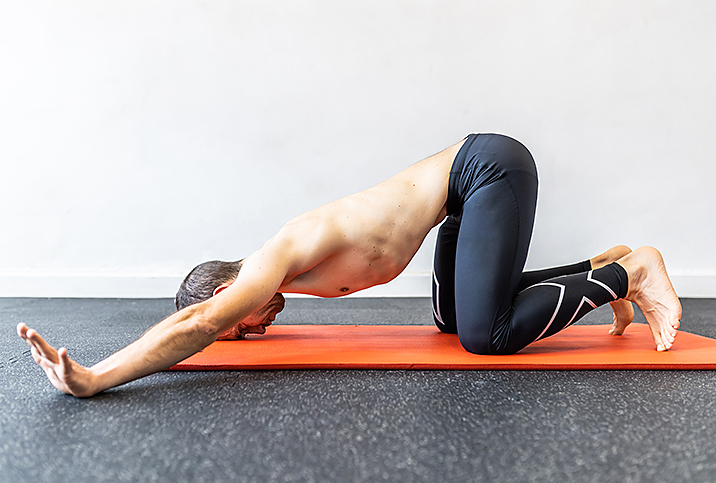The Relationship Between Exercise and Pelvic Floor Dysfunction

The pelvic floor is a group of muscles and tissues inside the pelvis. These muscles and connective tissues constrict the urethra, vagina and anal canal, so proper bowel and bladder control rely on them. Being able to relax and constrict the pelvic floor muscles enable more enjoyable sex.
Some internal organs are supported by the pelvic floor, helping keep them inside your body. If the muscles and connective tissues (fascia) are not functioning optimally, you may end up with prolapse. Damage to the pelvic floor, including the muscles, fascia or nerve supply due to surgery, trauma, radiation or birth, can lead to pelvic floor dysfunction (PFD).
Pelvic floor dysfunction is more common than many may realize, occurring in up to 55 percent of 15- to 64-year-old women. A pregnancy is the most common cause of PFD.
Exercise is one significant lifestyle factor that can improve pelvic floor dysfunction, leading to better bowel and bladder control and more satisfying sex. The tricky side of this is that specific exercises can worsen the situation.
How to know if you have pelvic floor dysfunction
"The primary cause of pelvic floor dysfunction is the same as diastasis recti, which is excessive intra-abdominal pressure. So if you notice signs of diastasis recti (bulging or coning of the abdominals), that can be an indicator of pelvic floor dysfunction," said Kristie Alicea, C.P.T., a prenatal and postnatal specialist and co-founder of ABC Fit Collective.
If you experience leakage when you sneeze or laugh or have any pain or a heavy feeling between the legs, that can also be a type of pelvic floor dysfunction.
Strengthening the pelvic floor can help
Weakening of the pelvic floor muscles can contribute to pelvic floor prolapse. Exercise of these muscles can alter that, said Sara Twogood, M.D., a board-certified OB-GYN in Los Angeles and co-founder of Female Health Education. Twogood further explained that chronic straining and pushing, such as chronic cough, constipation or heavy weight lifting performed incorrectly, could also weaken the pelvic floor.
"The pelvic floor muscles require regular exercise to stay healthy and strong, just like all the other muscles," said Rachel Gelman, P.T., D.P.T., a pelvic floor expert at INTIMINA. "They act as a sling for pelvic organs, such as the bladder and the uterus, offering lifelong support and potentially influencing everything from continence to enjoyment and intimacy."
The pelvic floor is always working
Pelvic floor muscles are part of the deep stabilizing system in your body, along with the transverse abdominis, multifidus and diaphragm. Research on muscle activation shows that the transverse abdominis and pelvic floor muscles are activated in virtually all physical movements, including raising your arms and lifting things.
These muscles are also responsible for supporting your posture and reducing back strain and pain. Keeping or returning your pelvic floor muscles to a healthy, functioning state is vital for quality of life, including the ability to stay active and have great sex.
"These muscles are always working, so they don't necessarily need specific attention, like Kegels. Any form of exercise will engage these muscles," Gelman said.
Some research supports supervised pelvic floor strengthening exercises that use strength-based protocols for those who experience incontinence or wish to prevent it during pregnancy. However, most physiotherapists have discontinued these isolated exercises and now recommend a more functional integrative approach.
Functional modifications to exercise are best
"Some ways to modify exercise is to focus on alignment and breathing—particularly deep breathing where you engage your pelvic floor," Alicea said. Finding simple and effective hip- and core-strengthening exercises can help fix pelvic floor dysfunction, she stated. Properly breathing and bracing while lifting weights will strengthen the muscles while protecting them from further damage.
Some of the most helpful exercises for PFD, according to Alicea, are 360 breathing while engaging the pelvic floor, slow and controlled glute bridges, side-lying clamshells and bodyweight squats.
To practice 360 breathing, imagine filling your belly, chest and back with air. Imagine a soda can that is pressurized and sealed. It is much more difficult to crush or collapse than an empty, unsealed one. Creating this pressure will support your spine. Engaging your pelvic floor muscles by imagining you are pulling a tissue out of a box with your vagina at the same time as breathing correctly will protect these muscles. You do not want to bear down without engaging these muscles.
"As you execute these exercises, you want to focus on your alignment, focus on breathing (and not holding your breath!), and make sure to not suck in the entire time—allow your stomach to expand on the inhale and release on the exhale," Alicea advised.
'A physical therapist that specializes in the pelvic floor can assess which muscles should be focused on and provide specific, pointed exercise regimens.'
Focus on alignment by keeping your ribcage over your pelvis during functional movements, such as squats, pulling, pushing, and rotational movements. Incorporating the proper breathing and isolated pelvic floor exercises during more functional, integrated training is an excellent way to strengthen your pelvic floor and heal from dysfunction. After time spent working on these factors, breathing and engagement should occur naturally.
Seeking professional guidance for which activities are best for you is essential. "My biggest tip is to see a physical therapist that specializes in the pelvic floor," Twogood recommended. "They can assess which muscles should be focused on and provide specific, pointed exercise regimens. It's like a personal trainer for the pelvic floor muscles."
There are some exercises to steer clear of if you have PFD—and a professional can go over that with you as well. If you are experiencing any degree of PFD, Alicea recommends avoiding "planks, pushups, sit-ups, [and] holding your breath on the exertion of any exercise."
"Avoid feeling like you are really straining through an exercise until you have healed and strengthened your pelvic floor," she added.
When to seek care
"It is always a good idea to consult a specialist before starting a new exercise routine," Gelman advised. "If someone suspects they have pelvic floor dysfunction or are experiencing bowel, bladder, sexual dysfunction, and/or pelvic pain, they should see a healthcare provider/pelvic floor specialist."
Pelvic floor physiotherapists can also provide you with specific exercise routines and tell you what you should avoid. If you do not know whether you have PFD, a healthcare provider can perform specialized tests to help you determine this.


















